I’ve often thought green garlic was a culinary secret that only gardeners appreciated.
Green garlic (also called spring garlic or baby garlic) is simply a young, immature garlic bulb that hasn’t yet divided. It looks like an overgrown scallion or small leek, and in fact it tastes like a cross of the two, with a heady essence of garlic.
Two of my favorite things, together in one plant!
I usually start seeing green garlic at farmers’ markets in March and April. It’s a vegetable in its own right and if you happen to come across green garlic, consider yourself lucky—its season is short and it only appears in early spring while supplies last, since it’s often a secondary crop.
But at home, you can grow green garlic as a staple crop, and it’s ready in half the time as regular garlic! (That’s right… no need to wait upwards of 9 to 10 months before you can harvest.)
Curious? Read on.
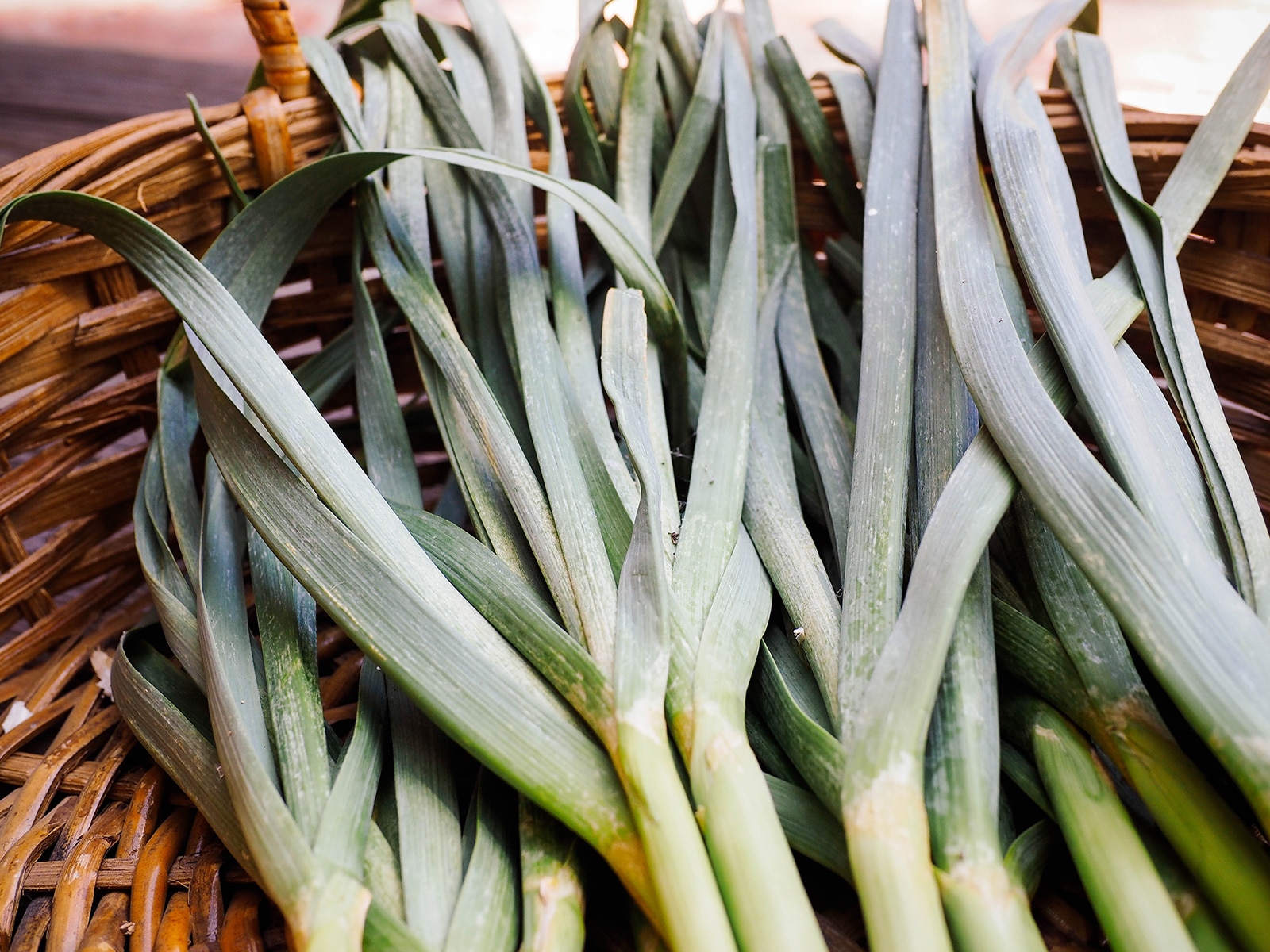
The easiest way to grow green garlic
Commercially-sold green garlic are actually thinnings from a farmer’s garlic field, planted in the fall and pulled in early spring to ensure a productive harvest for the rest of the crop.
In a home garden, however, green garlic is a crop that can be planted in spring and harvested in summer.
In my experience, I can plant garlic cloves when the soil is still cold yet workable, and pick the young plants at the same time my mature (fall-planted) garlic is ready for harvest in mid-summer.
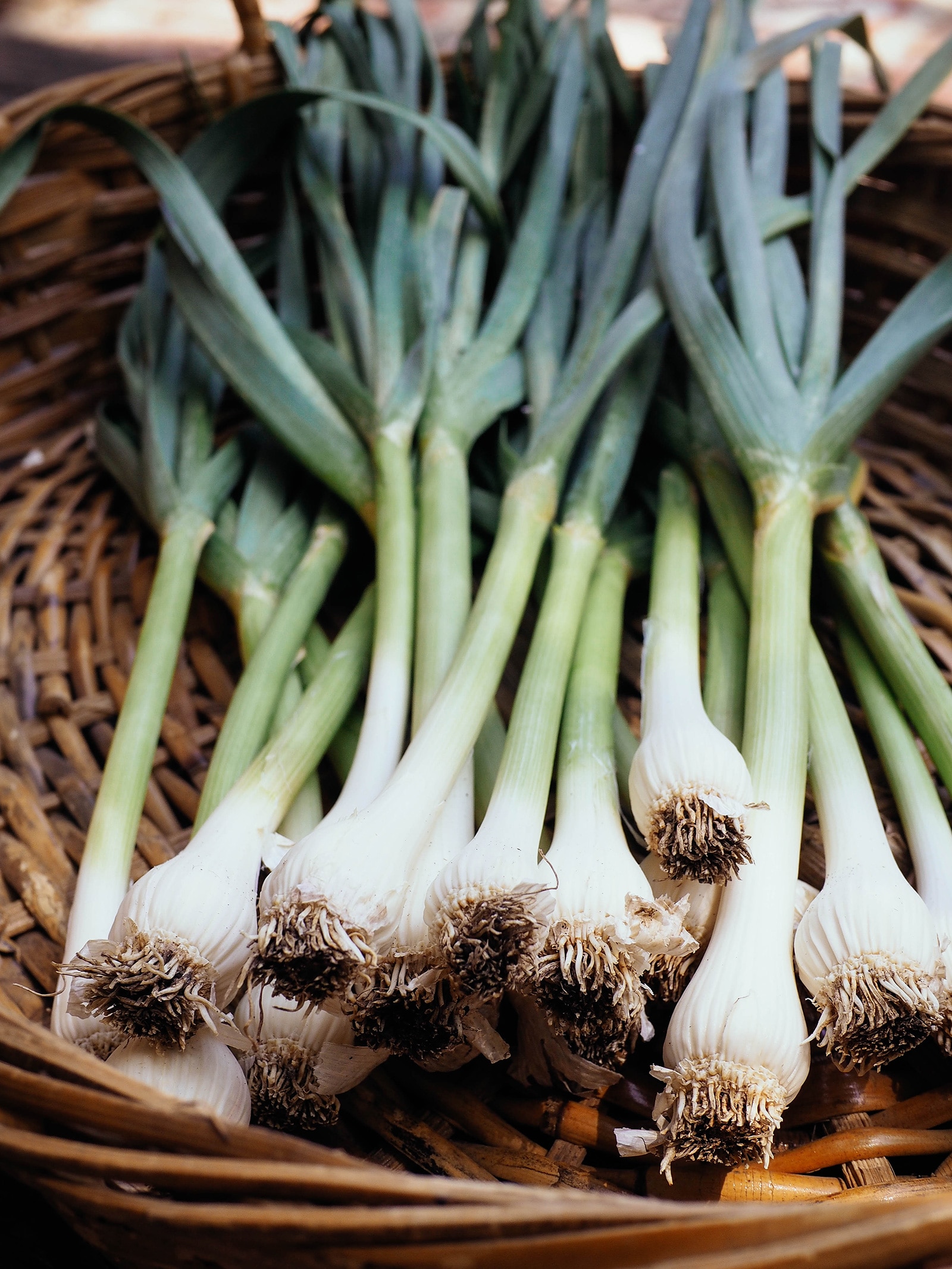
This is one of the benefits of spring-planted garlic. Not only do you get a completely different crop that you can use a different way, but because you don’t have to wait all season long for the garlic to grow, spring garlic is a good way to fill up that odd patch of soil in the garden.
As soon as the ground thaws in spring, you can stick a clove from your seed garlic here and there, wherever you find space: around your tomato transplants, next to the carrot bed, in the middle of your salad greens, and in spots where seeds never germinated.
Related: Soaking seeds can speed up germination—here’s how
Garlic is a natural pest repellent, so it’s worthwhile to plant a handful of cloves throughout your garden (with the bonus of harvesting and eating them).
Since the bulbs are not meant to develop fully, the cloves can be planted closer together (which makes green garlic an ideal crop to grow in containers, indoors or outdoors).
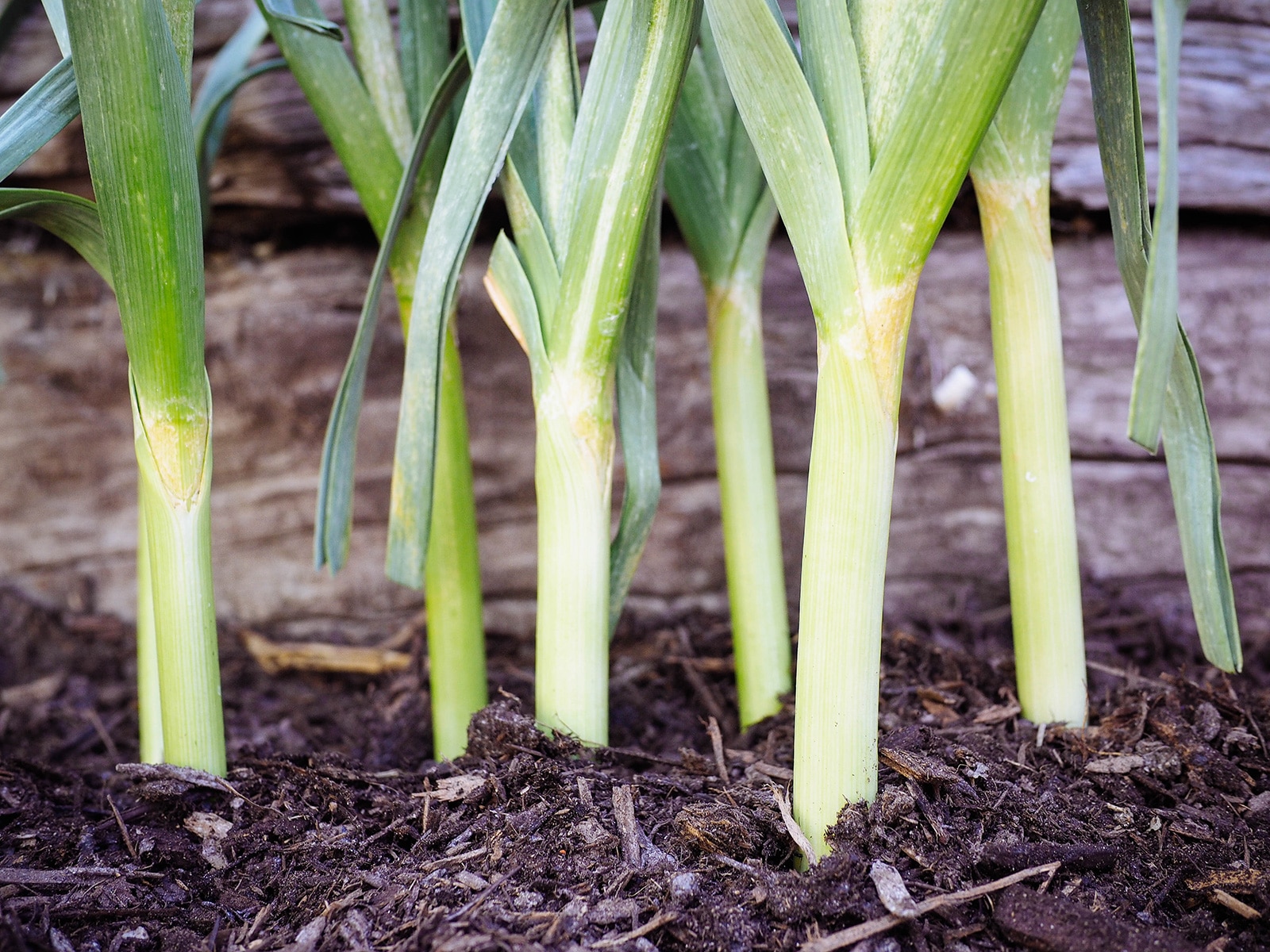
Step 1: Planting
Green garlic is very beginner-friendly and a great way to get instant gratification in the garden when the season starts.
Read more: The easiest seeds to plant in spring
Simply follow the same method for planting regular garlic as you do for green garlic. Separate the cloves (while keeping the paper wrappers on) and plant each one about 2 inches deep in well-draining soil with the pointed end up (and the root end on the bottom).
Space the cloves about 1 to 2 inches apart in a grid pattern, if you’re growing them in a dedicated bed, or plant them near other plants wherever there’s an empty patch of soil. If you interplant garlic this way, just keep an eye on neighboring plants to make sure they don’t shade or cover your green garlic as they grow taller.
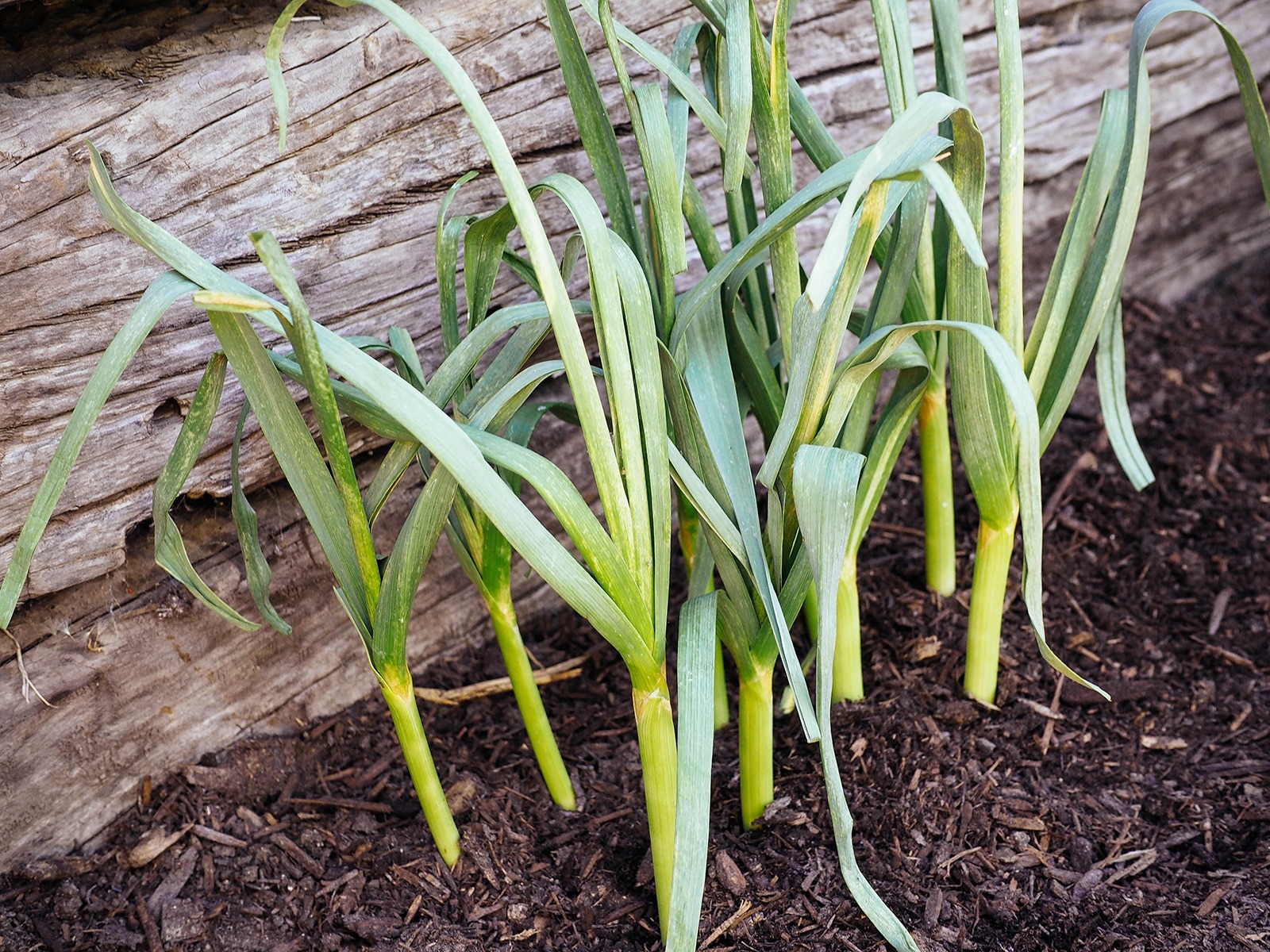
Step 2: Watering and mulching
Green garlic needs moderate watering, but unlike regular garlic—where you withhold water for a week before harvest—you continue to water green garlic up until you’re ready to pull it.
Mulch the plants with 2 to 3 inches of an organic material (like straw, wood chips, or shredded leaves) to conserve moisture and smother weeds. Keep the mulch a couple inches away from the plants, however; you don’t want to pile it up against the stems, which can lead to rot or disease.
While green garlic is a fairly low-maintenance crop, it’s susceptible to garlic rust the way fall-planted garlic is.
To keep the fungal disease in check, especially during rainy spring weather, never water your plants from overhead (or water early in the day so leaves have time to dry before nightfall).
Make sure there’s enough mulch layered on your beds to keep soil from splashing onto the leaves. If you live in a humid area or on the coast, you can try spacing your plants a little farther apart (2 to 4 inches) to allow for more air circulation.
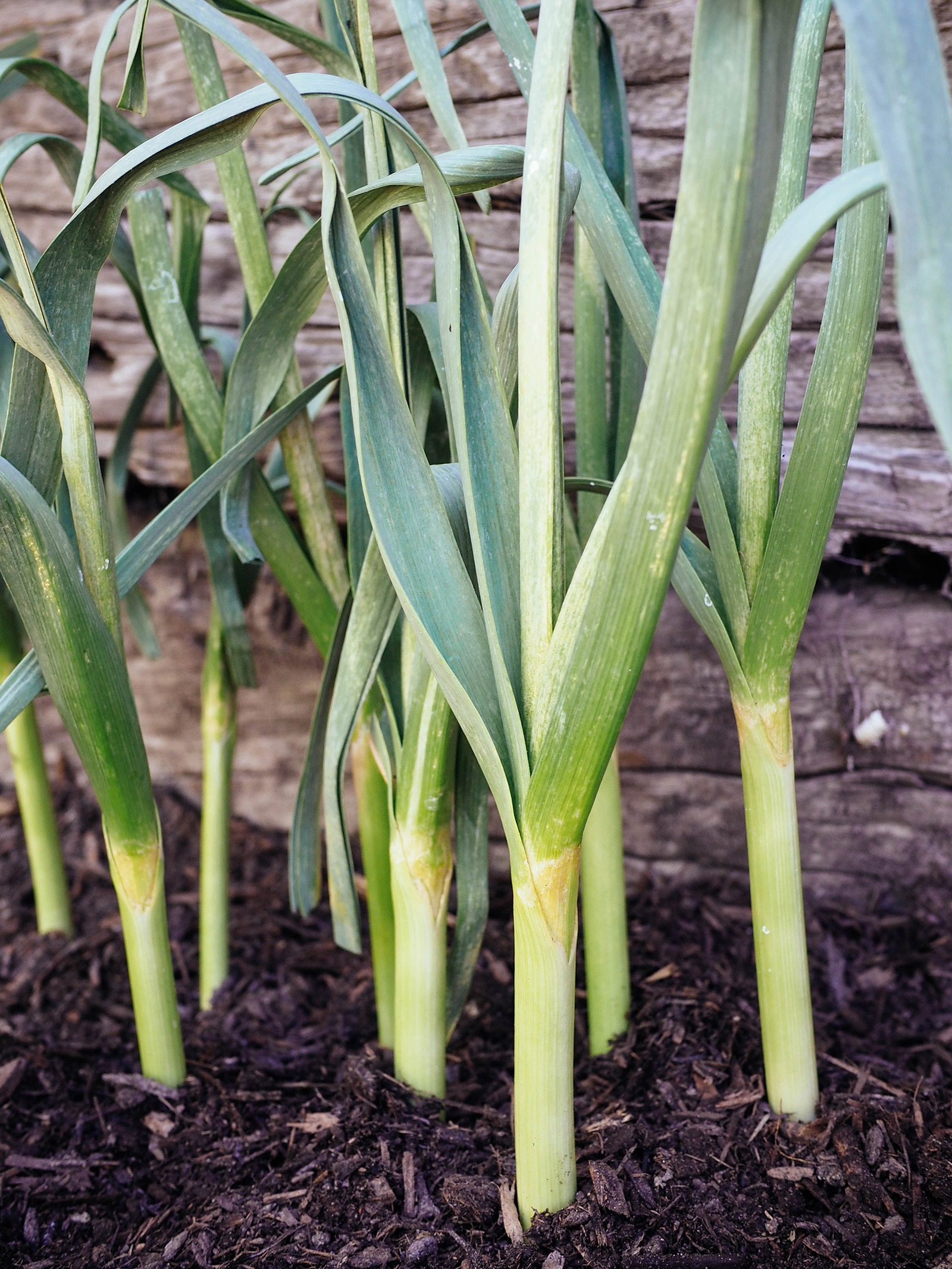
Step 3: Harvesting
As the weather starts to warm up in spring, the leaves will grow taller and denser. Depending on when you plant, you can harvest green garlic in two to four months (typically from May to July).
Green garlic can be pulled at any stage once the leaves are lush and full; the longer you wait to harvest, the more pronounced the bulb will be. (But don’t wait until the leaves die back before you harvest! You want to take advantage of the entire plant being edible.)
Read more: How to tell when garlic is ready to harvest
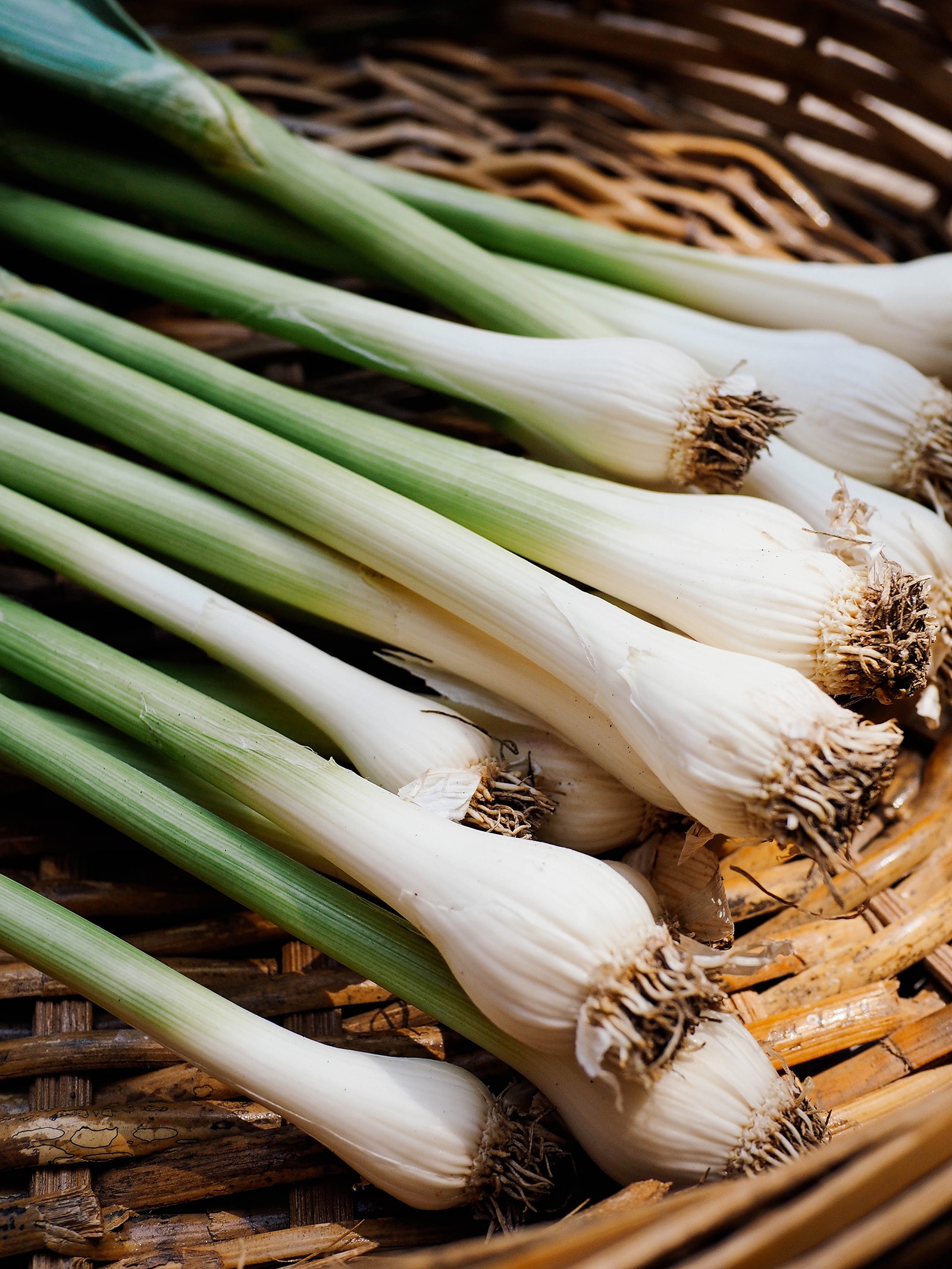
Where to find seeds
Seed for green garlic is the same as seed for fall-planted garlic. Rather than your typical seeds (the kind that come from flower heads), garlic is grown from fully-developed cloves taken from a mature bulb.
Learn more: How to choose the right garlic varieties for your garden
The only issue is, seed garlic generally isn’t available in spring, since most garden seed catalogs and nurseries are out of stock by fall.
So what can you do?
One option is to plant cloves from store-bought garlic—but there’s a catch. Sometimes, commercial garlic is treated with a growth inhibitor, a chemical that prevents it from sprouting. That means it’ll just rot in the ground since it can’t grow.
To get around this, try to find organic garlic (which hasn’t been sprayed) and separate the cloves for planting.
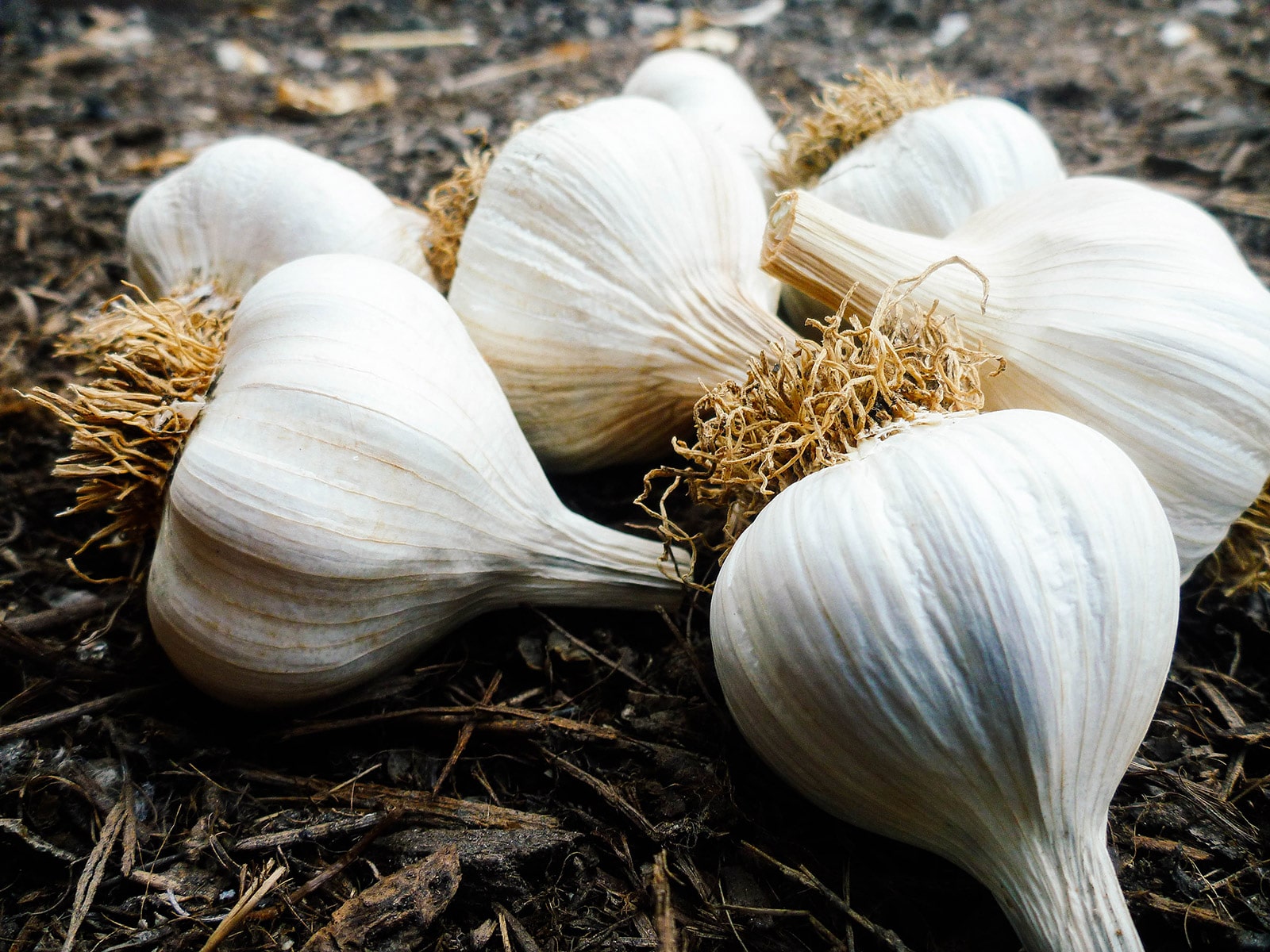
Another option, if you’ve grown and cured your own garlic, is to set aside a couple of bulbs to plant in spring. When kept in ideal conditions that are cool and dry, homegrown garlic that’s been properly cured will last several months after harvest. You can save some of this crop for spring planting and some for fall planting.
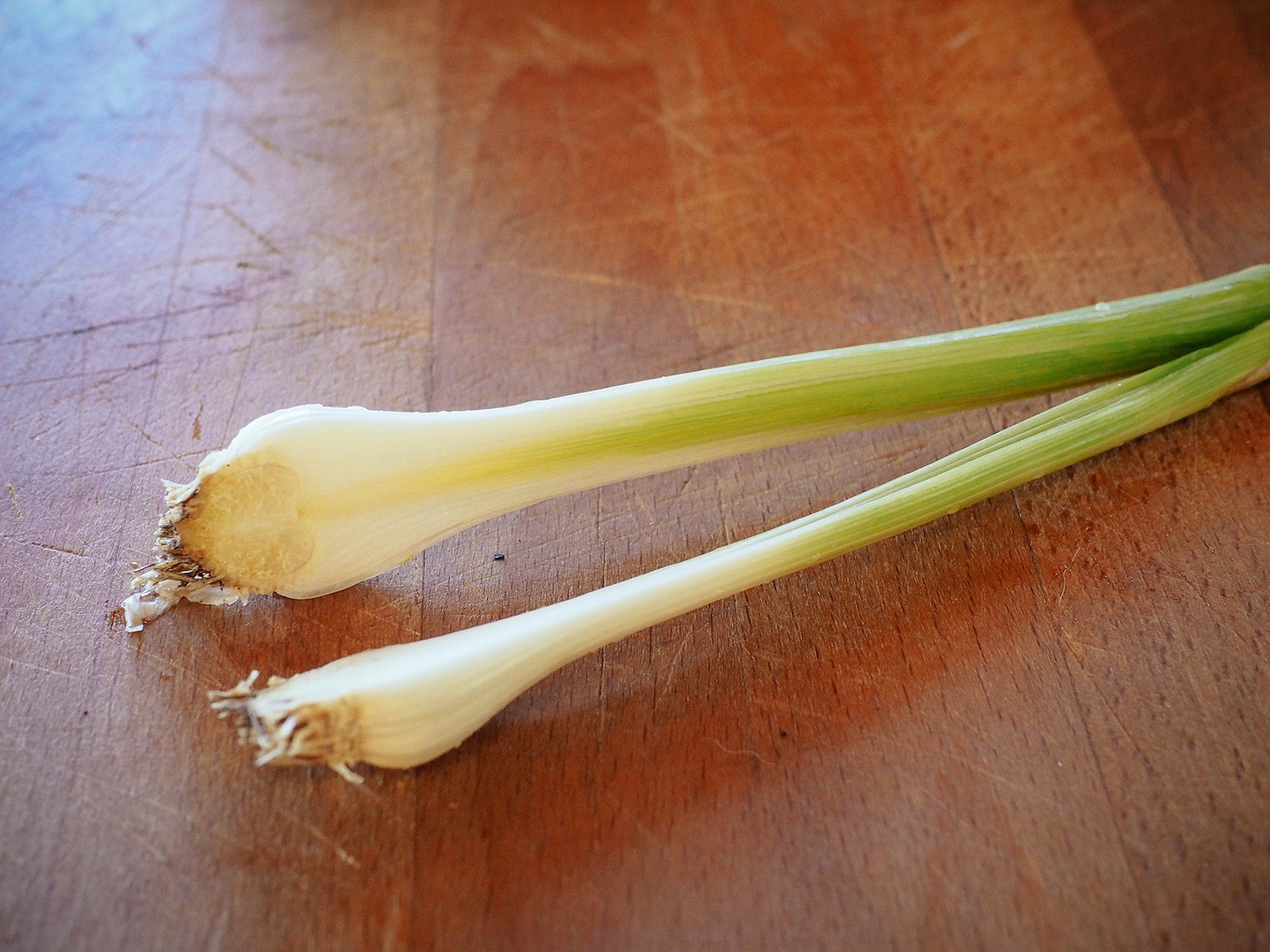
How to use it in the kitchen
There’s no curing required of green garlic; it’s meant to be eaten fresh, like a leek or green onion.
Green garlic is one of many plants in the garden where you can eat the entire vegetable, from the leaves (stems) down to the bulb.
Learn more: These weird parts of vegetables are actually edible
Cut into the white bulbous end and you’ll find it smooth and juicy; but honestly, the green leaves are my favorite part.
The most tender leaves are eaten raw: chopped up for a garden salad or minced to top a baked potato (the way you use chives). The rest are cooked the same way as an onion to flavor a dish.
In a braise or in the oven, green garlic turns tender and buttery, with the same sweetness of slow-roasted garlic.
How else can you eat green garlic? Make a pesto with the leaves, slice it onto pizza, roll it into butter, add it to soups and stir-fries. Chop it up and scatter over rice or noodles, onto nachos, and into eggs. I think it would also make a great pickle!
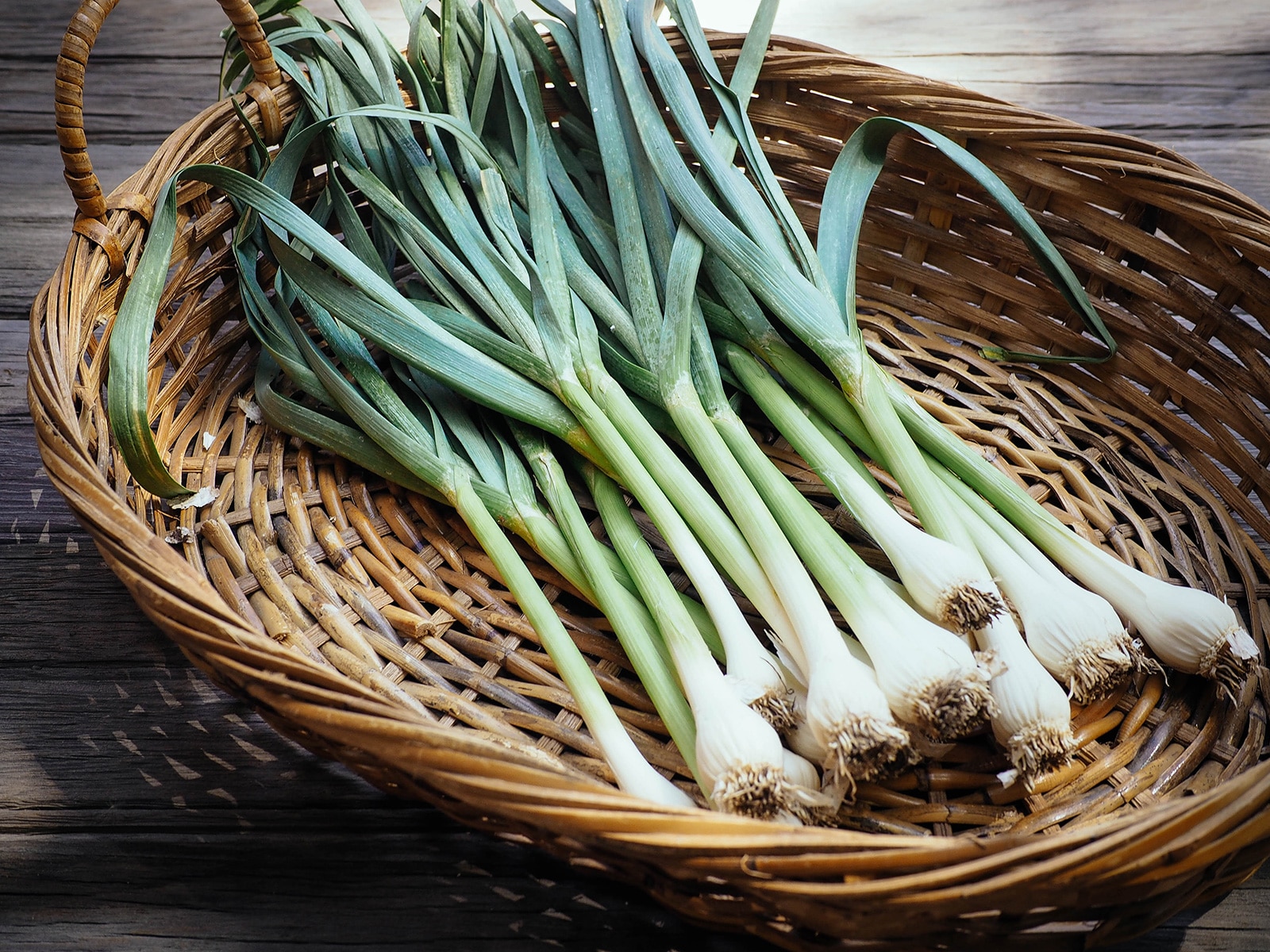
Is green garlic the same as spring onion?
Even though green garlic and spring onions may look the same and even belong to the same genus (Allium), they’re not the same plant.
Green garlic is the immature version of garlic (Allium sativum)—essentially, young garlic without a divided bulb.
Spring onion (Allium cepa) is the immature version of common onion, harvested before the bulb has had a chance to swell.
To make things more confusing, green garlic and spring onions are also not the same things as scallions, green onions, or bunching onions (Allium fistulosum), which look similar but are grown for their mild-tasting leaves.
This post updated from an article that originally appeared on June 24, 2014.


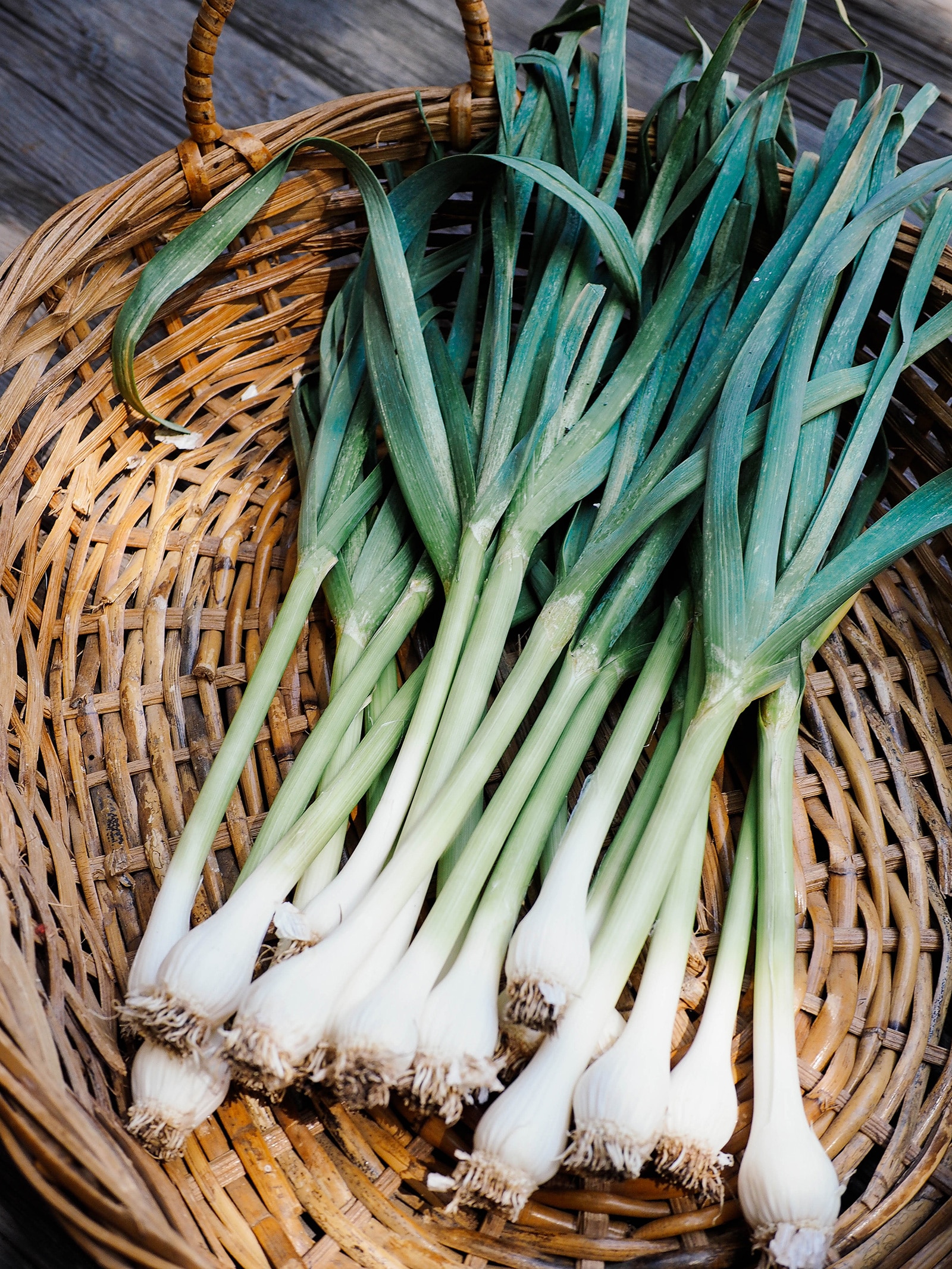



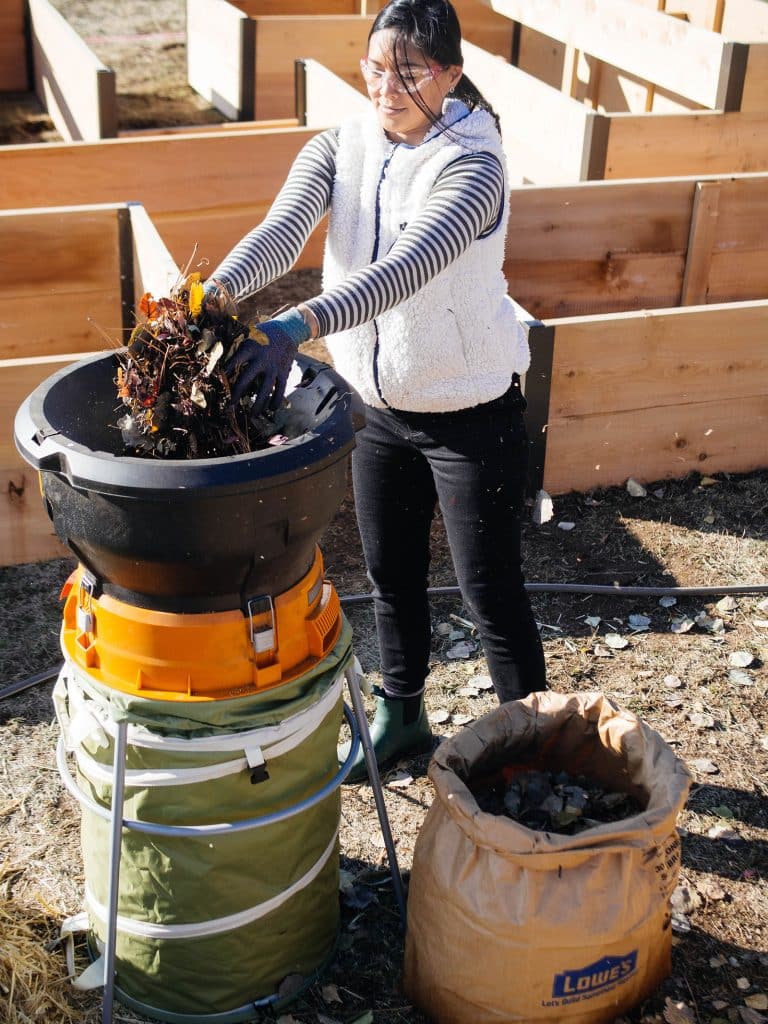







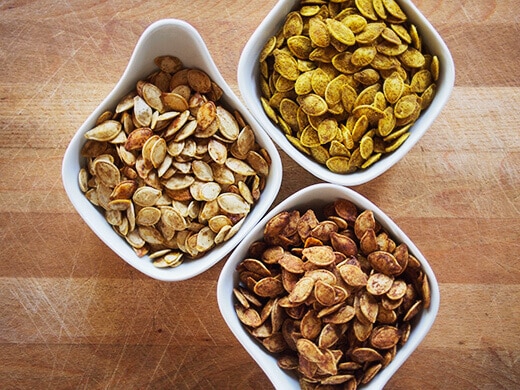

Hi Mam,
I would like to know if you squash the “green” part of the garlic olant does that part tast and smell like Garlic?
Can you use the “juce” to flavour butter or oils?
Green garlic and spring onion look a bit similar, but they’re not the same. Green garlic is basically young garlic harvested before the bulb fully develops — it has a mild garlicky flavor and you can use both the white base and green tops. Spring onion, on the other hand, is an immature onion with a milder onion flavor. They’re both great for adding freshness to dishes, but they bring different tastes.
I recently shared some easy tips for growing kitchen herbs and alliums in small spaces here: SoilFreeFarms.com
🌿
Linda, I found your blog a few months ago! I’ve put your instructions for asparagus in my veggie “bible” and I’m awaiting delivery of asparagus crowns, my beds are 8″ from the top as you suggested, compost, perlite, soil awaiting to be added as soon as they get here.
I’ve not heard of green garlic, we’ll have it from now on! Recently moved to the midwest from arid Colorado and there are so many more pests here that I’ve never had to deal with. And Humidity … I never understood what humidity was; will definitely plant some green garlic amongst my strawberries, blackberries, and black raspberries, lettuce, gee, everything! Thank you again
When I saw that some of my store bought cloves were sprouting I stuck a few of them in the ground in different parts of my garden. I was hoping for garlic scapes but found out later that I have soft neck garlic and need hard neck garlic if I want scapes. 😀 I haven’t harvested any until just recently and they were so different from the garlic at the store (they are crowded and are single little bulbs) I wasn’t sure if they needed to be cooked different. Thank you for posting this. I will thin out my garlic and happily eat the green garlic through out the year, feeling spoiled to have what is normally a brief, seasonal treat. What is funny is my patches of garlic are so crowded that little bulbs sit above the dirt in some places, making it very easy to harvest the baby bulbs.
If you grow normal garlic, you can always plant extra garlic — especially once you begin growing from your own stock. Left in the ground (not harvested) this extra garlic will persist for years, ready to be used however you wish: transplanted for pest control, spread out for green garlic, or divided and added to your regular garlic crop.
The extra garlic may (will) diminish in size over the years as the cloves from each head then sprout under such crowded conditions. No big problem; just dig up the sprouted clusters in the spring and plant them at normal spacing.
I obtained some garlic at an estate sale in the country. Brought to America from Hungary in coat pockets after that anti-communist revolution in the fifties, the owners cultivated it for years, until they moved away, after which it sat in a weedy bed for over 20 years. When I received it, the heads were as big around as tiny radishes. In three years, planted to normal spacing, they were back to normal size.
Think of the above techniques as Garlic In The Bank. Try “depositing” lots of extra garlic around fruit trees and among berry bushes.
Hi Betty
Do you grow indoor tropical plants?
If so, how do you water when you are travelling and doing outdoor activities?
Thanks
Does it need full sun?
Mine do just fine under my blackberry bushes. They do get full sun during late fall, all winder and early spring when the blackberries don’t have leaves.
Growing and Harvesting Green Garlic http://t.co/cL7cY6WYhO from Garden Betty by Linda Ly
Usually thinned, but worth growing on their own: Growing and Harvesting Green Garlic http://t.co/r6iwzFh2fC < TY for RT! @GardenOpus
Spring (or baby) garlic can be harvested in half the time. Growing and Harvesting Green Garlic http://t.co/H6ER6GblqM #gardenchat
Ideal for containers as you can plant it just an inch or two apart. Growing and Harvesting Green Garlic http://t.co/nravcFRbFw #gardenchat
Stick a few cloves in the ground for a delicious crop in just a couple months! Growing and Harvesting Green Garlic http://t.co/y3TPifSCaB
Usually pulled when the fields are thinned, but worth growing on their own: Growing and Harvesting Green Garlic http://t.co/r6iwzFh2fC
What a great idea, Linda!
Thanks!
If you planted garlic in the spring, harvest the young bulbs now! Growing and Harvesting Green Garlic http://t.co/vOSjibnEfS #gardenchat
Excellent! Am collecting scapes right now, a couple more to come. LOVE the idea of tucking cloves in amongst the huddled masses of other things. Another benefit is if you plant them throughout the season, you’ve always got oniony/garlicy greens to cook with, at all different stages. Excellent article, as always! Happy Summer, Linda!!! 🙂
Thanks Cary! Happy summer to you too!
Blogged on Garden Betty: Growing and Harvesting Green Garlic http://t.co/uAfksh423T